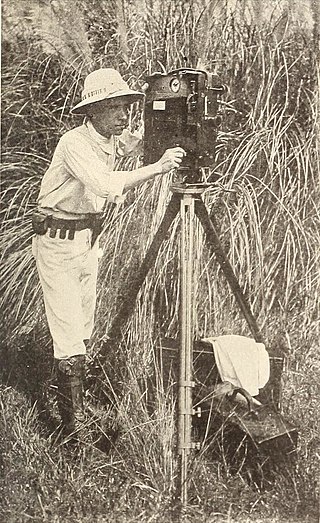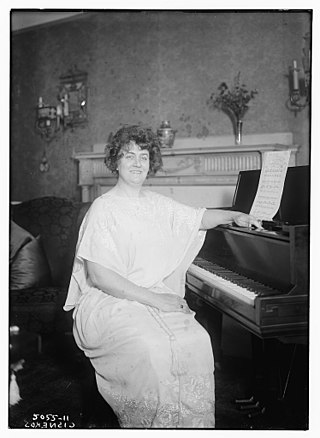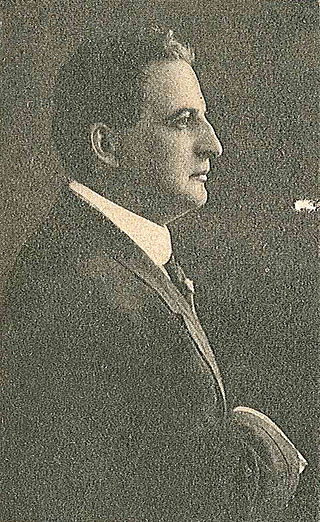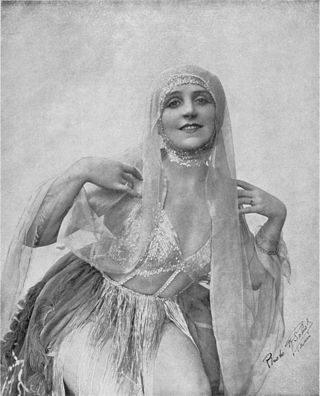
Florence Turner was an American actress who became known as the "Vitagraph Girl" in early silent films.

Ben Hur is a 1907 American silent drama film set in ancient Rome, the first screen adaptation of Lew Wallace's popular 1880 novel Ben-Hur: A Tale of the Christ. Co-directed by Sidney Olcott and Frank Oakes Rose, this "photoplay" was produced by the Kalem Company of New York City, and its scenes, including the climactic chariot race, were filmed in the city's borough of Brooklyn.

Robert G. Vignola was an Italian-American actor, screenwriter, and film director. A former stage actor, he appeared in many motion pictures produced by Kalem Company and later moved to directing, becoming one of the silent screen's most prolific directors. He directed a handful of films in the early years of sound films, but his career essentially ended in the silent era.

Gene Gauntier was an American screenwriter and actress who was one of the pioneers of the motion picture industry. A writer, director, and actress in films from mid 1906 to 1920, she wrote screenplays for 42 films. She performed in 87 films and is credited as the director of The Grandmother (1909).

The Lubin Manufacturing Company was an American motion picture production company that produced silent films from 1896 to 1916. Lubin films were distributed with a Liberty Bell trademark.

Ruth Roland was an American stage and film actress and film producer.

George K. Hollister was an American pioneer cinematographer.

Josephine M. Workman better known by her stage name, Princess Mona Darkfeather was an American actress who starred in Native American and Western dramas. During the silent era of motion pictures, from 1911 to 1917, she appeared in 102 movies. She is best known for her role as Prairie Flower in The Vanishing Tribe (1914).

Alice Hollister was an American silent film actress who appeared in around 90 films between 1910 and 1925. She is known for her roles in movies such as From the Manger to the Cross and The Vampire.

Jack J. Clark was an American director and actor of the early motion picture industry.

Helen Lindroth was a Swedish-born American screen and stage actress.

Eleonora de Cisneros was an American opera singer. She was a singer for the Metropolitan Opera company and became one of their principal singers. She was the first American-trained opera singer hired by the Metropolitan Opera company. During the early twentieth century, she performed at major opera houses in the United States, Cuba, Europe, Australia, New Zealand, South America and Russia.

Arthur Donaldson, was a Swedish-American actor and opera singer. He appeared in 71 films between 1910 and 1934.

Beaufort is a small village that lies on the banks of the River Laune in County Kerry, in the southwest of Ireland. It consists of a post office, three public houses, one supermarket, parish hall, guest houses and thirty private houses. As of the 2016 census, the population was 251. Beaufort sits at the foot of Ireland's highest mountain Carrantuohill.

Julia R. Hurley was an American actress who found popularity in her senior years in silent films. She is best remembered today as the 'landlady with the lamp' in the John Barrymore classic Dr. Jekyll and Mr. Hyde 1920, a role for which she is uncredited. This film is her most readily available film today.

Arrah-na-Pogue is a 1911 American silent film produced by Kalem. It is based on the 1864 play of the same name by Dion Boucicault. It was directed by Sidney Olcott with Gene Gauntier, Jack J. Clark, JP McGowan and Robert Vignola. Gene Gauntier adapted a play written by Dion Boucicault, Arrah-na-Pogue, an Irish phrase that can be translated as "Arrah of the Kiss".

Edward Irham Cole was an Australian theatrical entrepreneur and film director whose productions represented a synthesis of Wild West show and stage melodrama. He managed a theatre company, called the Bohemian Dramatic Company, that performed in semi-permanent and temporary tent theatres. During 1910 and 1911 Cole directed a number of silent films, adapted from his stage plays and using actors from his theatre company.

Natalia Vladimirovna Trouhanowa, also seen as Natalia Trouhanova, Natalia Trukhanova, or Natacha Trouhanowa-Ignatieff, was a French dancer born in Kiev.

The Drummer Girl of Vicksburg is a lost 1912 silent motion picture produced by Kalem Company of New York City and filmed in Jacksonville, Florida. With a storyline set in the 1860s, during the American Civil War, the military drama starred Miriam Cooper in the title role with a supporting cast that included Guy Coombs, Anna Q. Nilsson, and Hal Clements.

Velma Virginia Whitman was an American actress who appeared in comedy theatre and silent films during the 1900s and 1910s. A Virginian, she began appearing in theatre roles in 1905 and became known for her portrayal of complicated emotional characters. After appearing with multiple different theatre groups, she established her own in 1906 named Whitman's Comedians and acted as the leading woman for most performances, alongside her husband as the leading man. The large theatre company became well known throughout the American South for their numerous and varied plays up through 1910.




















